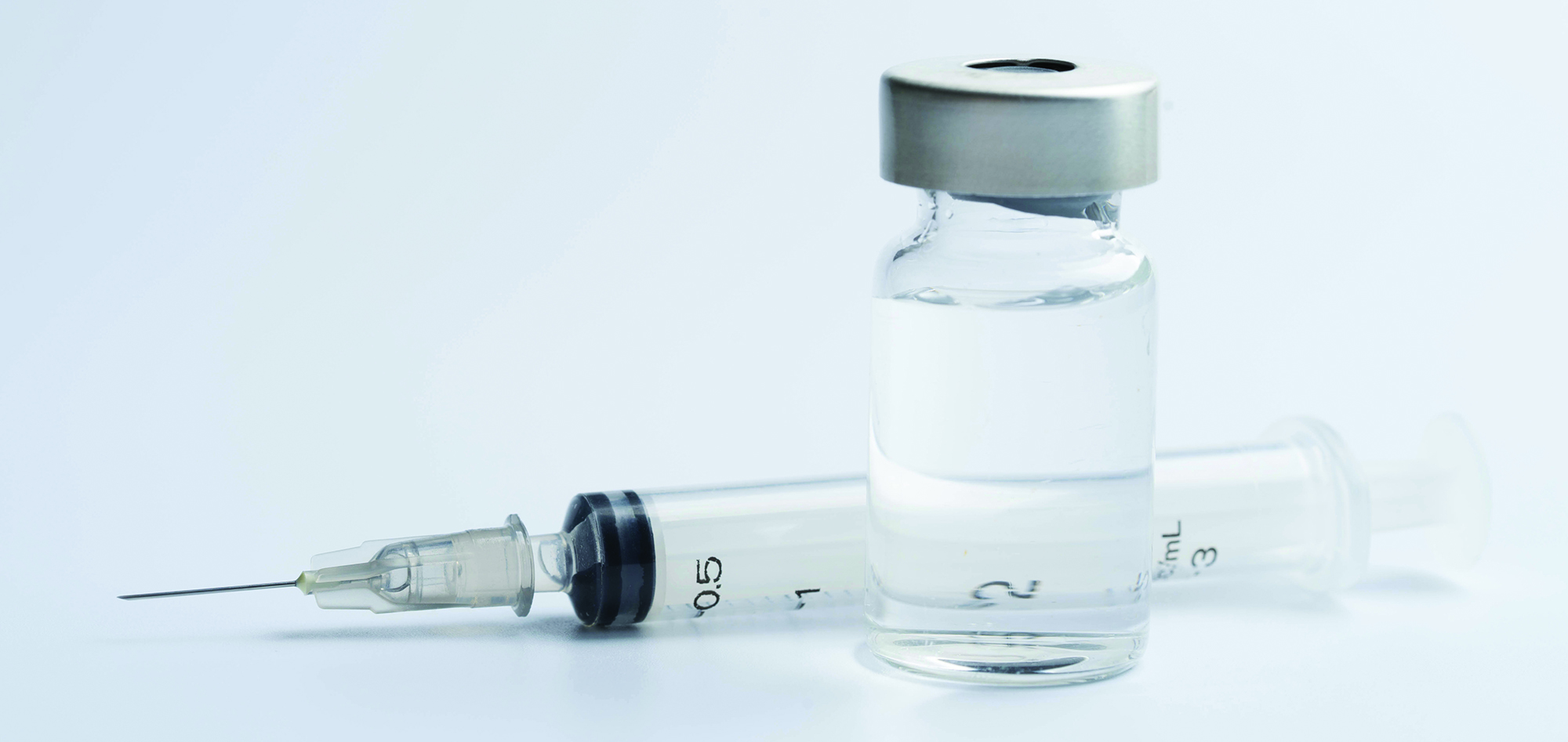
For some patients, long-acting injectable buprenorphine is the best treatment option for their opioid use disorder. But new research, led by a Pritzker School of Medicine student, finds that many substance use treatment facilities don’t offer it. (iStock.com/onairjiw)
A valuable tool to fight the opioid epidemic is being underused, new research finds.
For people struggling with opioid use disorder, anticraving pharmaceuticals such as buprenorphine or methadone can be an essential tool in the recovery process. But many of these medications require patients to take multiple doses a day or, in the case of methadone, make daily visits to a clinic for supervised administration. Long-acting injectable (LAI) buprenorphine, which came on the market in 2018, aims to ease those logistical burdens with a single monthly shot.
“If I’m counseling patients about this, I’ll often say, ‘Instead of remembering you have to do 60 things every month, you only have to do one,’” explains Samuel Bunting, a resident in psychiatry at UChicago Medicine. “And that’s why the LAIs are so great for chronic and relapsing illnesses like addiction.” Indeed, they’ve been used in psychiatric treatment since the 1960s.
But, according to a new study by Bunting and others, LAI buprenorphine isn’t readily available to the patients who need it. “Despite long-acting injectable buprenorphine being a very effective and useful tool to help folks who live with opioid use disorder, it’s not being offered in most facilities,” says Nitin Vidyasagar, a third-year student at the Pritzker School of Medicine and the first author of the paper, which appeared in the Journal of the American Medical Association in January.
In fact, the authors found, only 61.9 percent of substance use treatment facilities offered any form of medication for opioid use disorder as of 2022; of those, just 32.6 percent offered LAI buprenorphine. The study analyzed data from the National Substance Use and Mental Health Services Survey, a government-administered questionnaire. While the survey data does not directly address why such a valuable medication option is being underused, the researchers identify some possible barriers—among them, the logistical challenges of delivering injections, insurance issues, and strict inventory management rules.

Vidyasagar came to medical school with a nascent interest in opioid use disorder. During college, he’d worked at an organization focused on the prevention of sexually transmitted infections—including HIV, which people who use opioids are more vulnerable to contracting.
At Pritzker Vidyasagar began collaborating with Bunting, who shares his interest in public health issues that lie at the intersection of mental health, sexual health, and substance use. Bunting had worked on another research project that drew from the National Substance Use and Mental Health Services Survey; the two realized they could use the same data set to investigate LAI buprenorphine availability.
As a psychiatrist, Bunting has lots of experience with LAIs, which are used to treat conditions including schizophrenia. For that reason, mental health treatment facilities are typically designed and staffed with injection delivery in mind.
Bunting suspects that a lack of such infrastructure in substance use treatment facilities may be partly to blame for the limited availability of LAI buprenorphine. Prescriptions for other forms of buprenorphine can be filled at a pharmacy, but with an LAI, “you’re not just giving people a piece of paper,” he says. “That management has to come in-house, and it takes a lot of time and a lot of person-hours to do it effectively at scale.”
Tellingly, the research found that substance use treatment facilities that had integrated primary care or that offered mental health treatment including LAI antipsychotics were more likely to offer LAI buprenorphine—presumably because the setup required to deliver shots was already there.
Other administrative hurdles probably play a role in the scarcity of LAI buprenorphine as well: Facilities must use doses within 14 days of receiving them, which complicates inventory management. LAI buprenorphine is also more likely to require insurance preauthorization than other forms of buprenorphine.
But these barriers can and ought to be surmounted, the researchers say. Ultimately, “what we want is to make sure that we are really able to match the patient to the treatment that works best for them,” says Mim Ari, an assistant professor of medicine and a coauthor of the research. The best medication option for a patient depends on a host of factors, including the severity and duration of their opioid use disorder, lifestyle factors, and individual preference. “We still have a ways to go, I think, to make that matching process as seamless as possible.”
Preparing students to address the opioid epidemic, whether through research or clinical practice, is an imperative, adds Vineet Arora, AM’03, Herbert T. Abelson Professor of Medicine, a coauthor of the JAMA study, and the dean for medical education at Pritzker. “In fact, it’s so important that the federal government requires a certain amount of training in medical school,” she says.
But rather than fulfilling the requirement through passive lectures or videos, Pritzker provides hands-on training through a program developed by Sarah Follman, MD’21, and assistant professor of medicine P. Quincy Moore. In the program, which is now being formally incorporated into the school’s curriculum, pre-clerkship students learn to screen emergency department patients for opioid overdose risk. High-risk patients receive training from the students on how to identify and respond to an overdose, as well as a kit with the overdose-reversing drug naloxone to take home.
“Research has shown that clinicians are likely to stigmatize these patients,” Arora explains. Giving students exposure to patients struggling with opioid use disorder early in their training “could help destigmatize opioid use disorder and also help treat it.”
